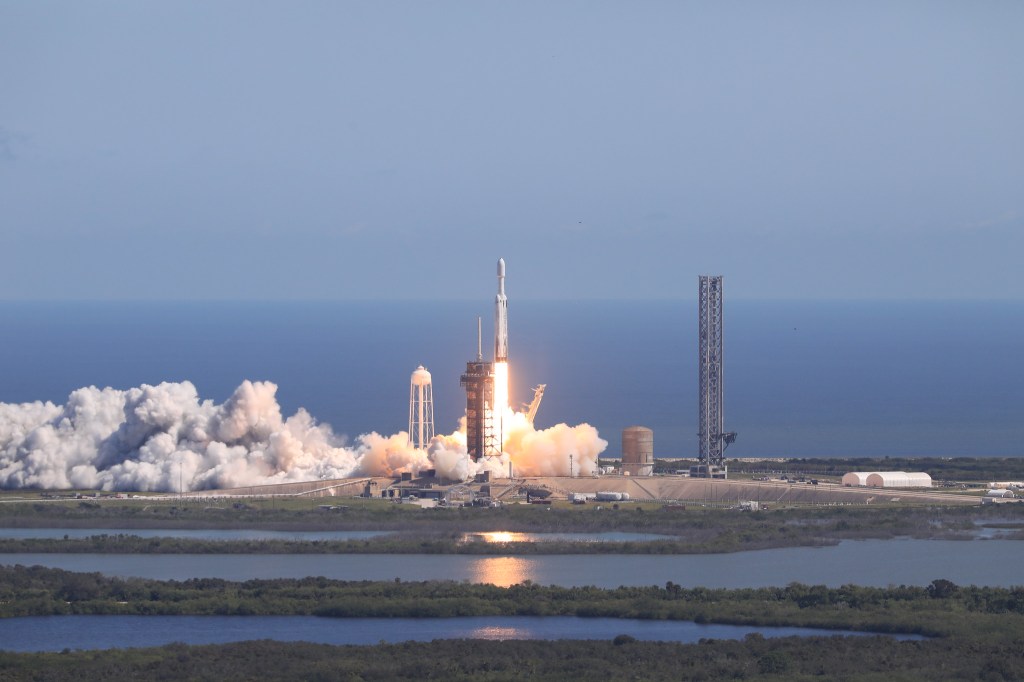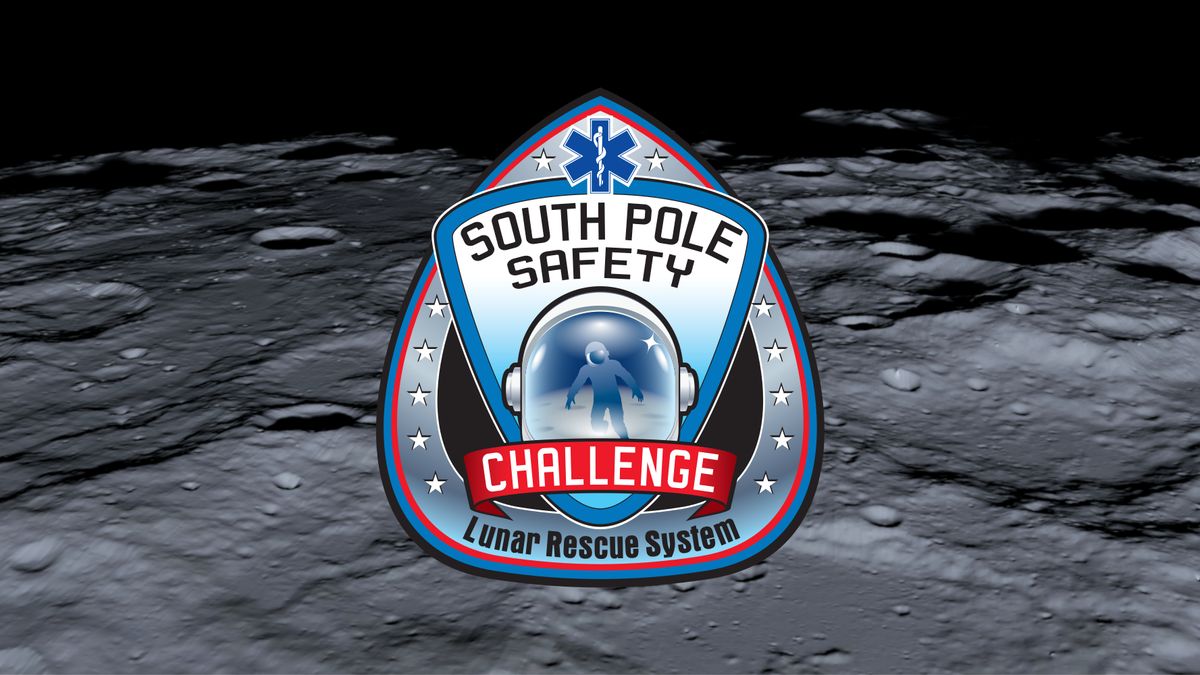An artist’s concept of the Earth, Moon, and Mars. Credit: NASA As NASA develops a blueprint for space exploration throughout the solar system for the benefit of humanity, the agency released several new documents Friday updating its Moon to Mars architecture. The roadmap sets NASA on course for long-term lunar exploration under the Artemis campaign in preparation for future crewed missions to Mars. Following an Architecture Concept Review, the 2024 updates include a revision of NASA’s Architecture Definition Document which details technical approaches and processes of the agency’s exploration…
Read MoreTag: Artemis
NASA Kennedy Top 24 Stories of 2024
A SpaceX Falcon Heavy rocket carrying NASA’s Europa Clipper spacecraft lifts off from Launch Complex 39A at NASA’s Kennedy Space Center in Florida at 12:06 p.m. EDT on Monday, Oct. 14, 2024. SpaceX From sending crew members to the International Space Station to launching a spacecraft to Jupiter’s icy moon Europa to determine if it could support life, 2024 was a busy record setting year for NASA and its partners at Kennedy Space Center in Florida. JANUARYFirst Lunar Lander Takes Flight The first flight of NASA’s CLPS (Commercial Lunar Payload…
Read MoreNASA Accelerates Space Exploration, Earth Science for All in 2024
With a look back at 2024, NASA is celebrating its many innovative and inspiring accomplishments this year including for the first time, landing new science and technology on the Moon with an American company, pushing the boundaries of exploration by launching a new mission to study Jupiter’s icy moon Europa; maintaining 24 years of continuous human exploration off the Earth aboard the International Space Station, and unveiling the first look at its supersonic quiet aircraft for the benefit of humanity. The agency also shared the wonder of a total eclipse…
Read MoreTrump may cancel NASA’s powerful SLS moon rocket – here’s what that would mean for Elon Musk and the future of space travel
Since Donald Trump’s recent electoral victory, rumors and speculation have circulated that NASA’s giant moon rocket, the Space Launch System (SLS), could be under threat. The rocket is one of several key elements needed for the US space agency’s Artemis programme, which aims to return humans to the moon for the first time since 1972. For the first lunar landing mission, called Artemis III, the SLS will launch four astronauts on NASA’s Orion crew capsule. Orion will then travel to the moon. Once in lunar orbit, Orion will dock with…
Read MoreNew Artemis Virtual Meeting Backgrounds Released Celebrating Artemis I, Looking to Artemis II and Beyond
8 min read Preparations for Next Moonwalk Simulations Underway (and Underwater) Virtual meetings feeling a little stale? NASA has just unveiled a suite of new Artemis backgrounds to elevate your digital workspace. From the majesty of the Artemis I launch lighting up the night sky to the iconic image of the Orion spacecraft with the Moon and Earth in view, these virtual backgrounds allow viewers to relive the awe-inspiring moments of Artemis I and glimpse the bright future that lies ahead as the Artemis campaign enables humans to live and…
Read MoreWill astronauts need to be rescued from the moon? NASA wants to be prepared just in case
NASA wants ideas on how to create emergency response plans for future missions to the moon. The space agency’s South Pole Safety challenge focuses on the development of innovative solutions for a compact, efficient system that astronauts can use in the event of an emergency during extravehicular activities (EVAs) on the lunar surface. Participants are asked to submit technical design concepts that could be adapted for NASA’s Artemis program. “If an astronaut crew member becomes incapacitated during a mission, the ability to return them safely and promptly to the human…
Read MoreNASA Plans to Assign Missions for Two Future Artemis Cargo Landers
Early conceptual renderings of cargo variants of human lunar landing systems from NASA’s providers SpaceX, left, and Blue Origin, right. The large cargo landers will have the capability to land approximately 26,000 to 33,000 pounds (12-15 metric tons) of large, heavy payload on the lunar surface. Credit: SpaceX/Blue Origin NASA, along with its industry and international partners, is preparing for sustained exploration of the lunar surface with the Artemis campaign to advance science and discovery for the benefit of all. As part of that effort, NASA intends to award Blue…
Read MoreSix Ways Supercomputing Advances Our Understanding of the Universe
At NASA, high-end computing is essential for many agency missions. This technology helps us advance our understanding of the universe – from our planet to the farthest reaches of the cosmos. Supercomputers enable projects across diverse research, such as making discoveries about the Sun’s activity that affects technologies in space and life on Earth, building artificial intelligence-based models for innovative weather and climate science, and helping redesign the launch pad that will send astronauts to space with Artemis II. These projects are just a sample of the many on display in…
Read MoreI Am Artemis: Joe Vermette
NASA HLS (Human Landing System) Program strategic communicator and U.S. Navy Reservist Public Affairs Officer Joe Vermette brings a wealth of public service to Artemis communication activities. NASA/Ken Hall Coming from a Navy family, Vermette was inspired to military service by the example of his brother, uncles and father, who admired President John Kennedy’s call to land on the Moon and for citizens to do what they can for our country. Photo courtesy Joe Vermette While some stand on the sidelines and witness history, others are destined to play a…
Read MoreI am Artemis: Lane Polak
Lane Polak is a technical writer for NASA’s SLS (Space Launch System), where he is responsible for creating content that raises public awareness of NASA and specifically SLS. NASA/Samuel Lott Growing up, Lane Polak didn’t have much interest in space. Instead, he was busy writing stories, doodling, or riding his skateboard. He later dreamed of becoming an author but also considered stepping into the arena as an American Gladiator. After earning a degree in communications with a minor in English from the University of Alabama in Huntsville, Polak chose to…
Read More








